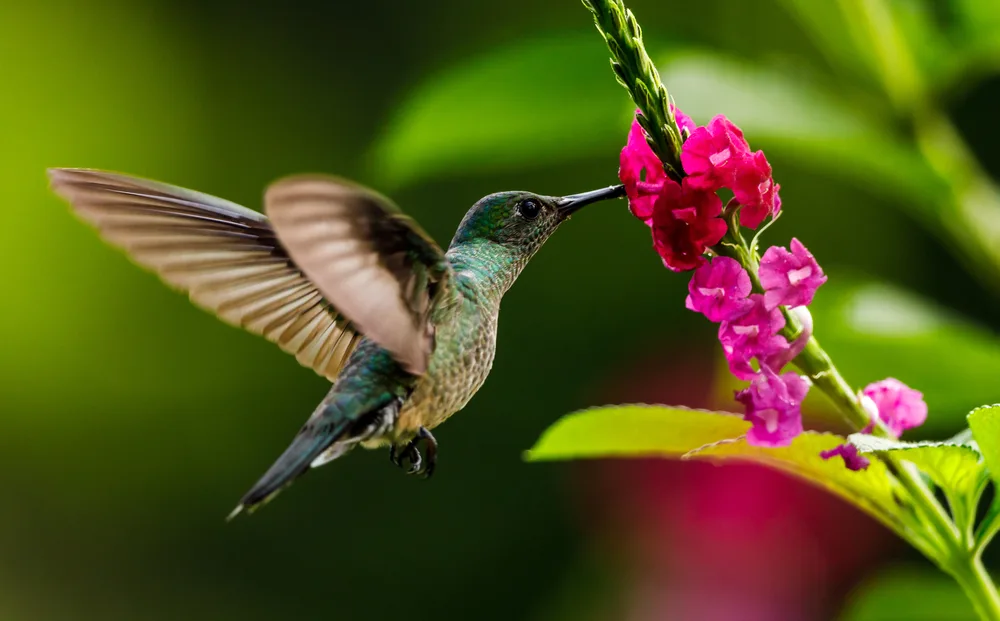Presenting treats for birds in your yard can be enjoyable. It’s a kind gesture and can certainly encourage birds to become frequent visitors to your home.

However, it’s crucial to avoid including grape jelly in their snack options because this sweet treat can pose a significant risk when you introduce a bird feeder to your outdoor space.
Last summer, Raptor Education Group Inc. (REGI) admitted three hummingbirds; one was found deceased upon arrival, while the other two were fighting for survival, all covered in grape jelly. In the subsequent months, more and more hummingbirds were rescued, all affected by the same issue.
In general, many people aren’t actively monitoring their feeders, and most aren’t properly equipped to care for birds in need.
If you ever encounter such a situation, delicately cleanse the hummingbird with a warm saline solution comprising 1 teaspoon of salt and 1 cup of water.
Alternatively, a store-bought saline solution works just as effectively. Nonetheless, much of this can be addressed through proper education on the appropriate diet and feeding practices for hummingbirds, so read on if you require a brief overview of how to support these birds better.
Understanding the Perils of Grape Jelly for Hummingbirds
Let’s begin by discussing why grape jelly presents such a danger. Orioles, birds similar yet distinct from hummingbirds, are known to consume sweeter delicacies like orange halves and jellies.
While these majestic birds can digest such treats, hummingbirds cannot. If your feeder welcomes all birds, this can pose a significant problem since hummingbirds are attracted to the sweet fragrance of the jelly and the insects it naturally draws.
These nectar-loving birds have delicate feet, making it challenging to grasp wide surfaces and move around.
It’s common for them to slip into the jelly, and as temperatures rise, the jelly’s consistency can melt, covering their wings, feet, and feathers.
Escaping becomes arduous, and as the jelly solidifies, their abilities deteriorate, often leading to death or severe injury.
Additionally, the jelly contains high levels of artificial sugar, which is unhealthy for birds, particularly those that regularly feed from your feeder.
To address this issue, it’s essential to be mindful of the food you place in your feeder and the design of the snack trays. Opt for smaller, rimmed dishes that prevent birds from becoming trapped. If you attract other bird species, observe which birds frequent your feeder to ensure you offer suitable snacks.
Healthier Snack Alternatives for Hummingbirds
If you wish to attract hummingbirds to your yard without deterring them, consider offering them these healthy alternatives.
Since birds have evolved to process natural sugars in the wild, bird jelly, like the one mentioned here, is an excellent choice for birds with sweet teeth.
Its thick consistency makes it easier for birds to digest, and it provides them with essential nutrients free of cornstarch and preservatives.
Other options include orange slices, suitable for all birds, and nectar. Prepare hummingbird-safe nectar by mixing one part water with four parts sugar until fully dissolved.
Avoid adding any dye, change the nectar every other day, and clean the feeder regularly to prevent mold or mildew buildup.
Given their slightly more complex diet, proteins are also highly beneficial for hummingbirds. Placing your feeder in a tree frequented by aphids, mosquitoes, spiders, and ants can help hummingbirds maintain a balanced diet.
Besides being stunning creatures deserving of protection, hummingbirds also serve as natural pest control, benefiting any home or garden. Pro tip: incorporate red elements into your garden to attract hummingbirds effortlessly.
